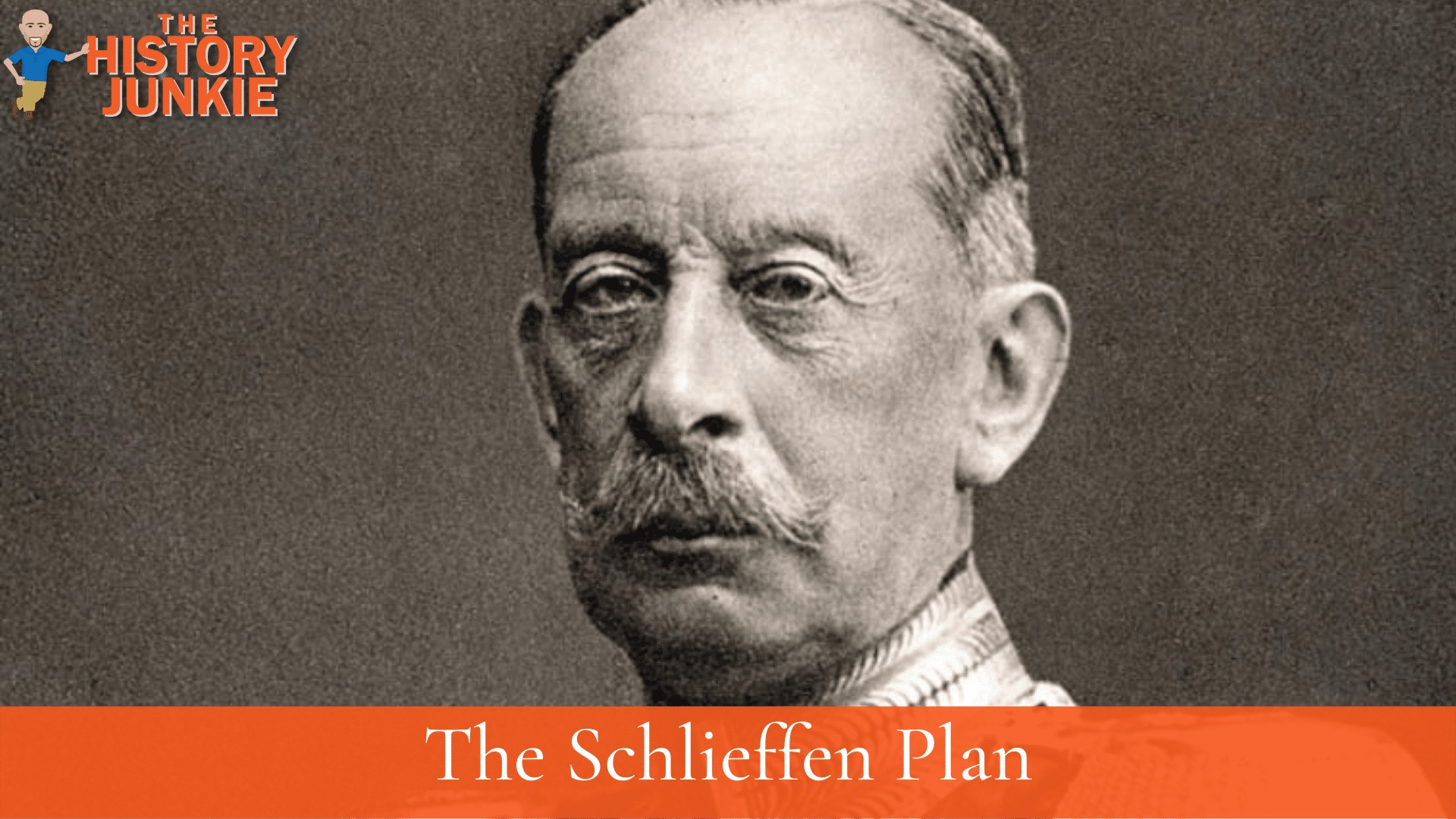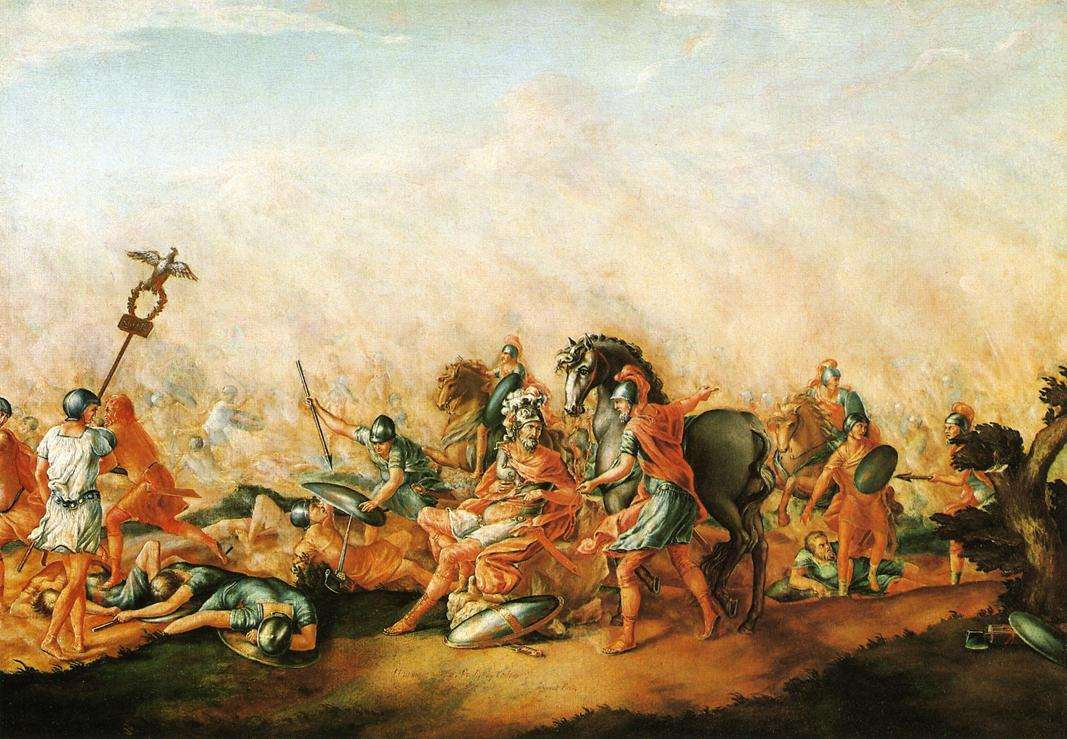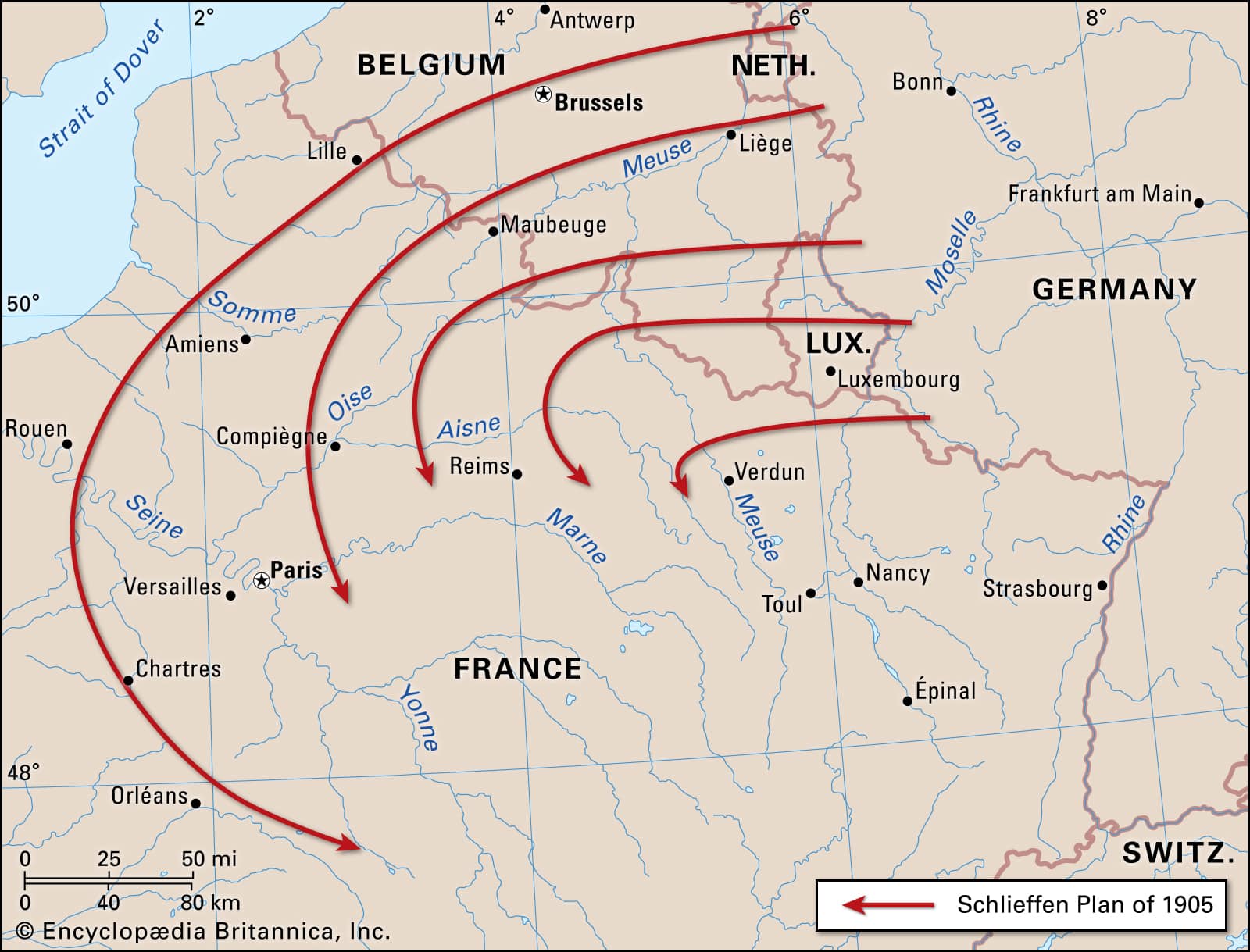The Schlieffen Plan was developed by Field Marshal Alfred von Schlieffen and was a plan to conduct a war on two fronts.

Germany was a country with two borders, and Schlieffen believed they could be effective on two fronts if they attacked systematically through a common border and turn the French flanks.
Alfred von Schlieffen was Chief of the General Staff of the German Army from 1891 to 1906. He developed this plan in 1905. The Germans would try to implement his plan in 1914 at the beginning of World War I at the Battle of the Marne.
Origins of the Schlieffen Plan

The original plan that was drawn up by Alfred von Schlieffen was based on an ancient battle that took place between Rome and Carthage during the Second Punic Wars.
The Battle of Cannae (216 B.C.) was a victory for the genius General Hannibal when he defeated a much larger Roman force with a successful double envelopment. He was able to massacre the Roman legions due to turning the Roman flanks and destroying them.
The flanking maneuver used was a central part of Schlieffen's Plan. He believed that a modern army could outflank an enemy with a massive flanking maneuver and gain a quick victory.
He believed this could be done on two fronts, and the major advantage the Germans had that the Carthaginians did not was that Russia and France were separated, with Germany in the middle.
With a quick victory against France, Schlieffen believed that the German Army could then turn its attention to Russia with massive troop concentration and rapid deployment.
Setup of the Plan
The entire point of the Schlieffen Plan was to overwhelm your opponent with substantial numbers and quick, decisive action. Speed was a significant factor because a quick victory allowed the Germans to redeploy their army across Germany to fight Russia.
However, the manpower needed was significant. His plan called for the following:
- He would need four army groups to mass on the German right.
- The northernmost force would consist of 5 cavalry divisions, 17 infantry corps, 6 replacement corps, a larger number of reserves, and a significant number of brigades called Lansturm which made up of men over 45 years of age.

Image from Encyclopedia Britannica
The forces would need to create a wheel that would swing right once they passed through Belgium.
The main body of the force would then turn to engage the defenders of the French capital and, in a swift blow, be able to encircle the capital in the north and east.
The last part of the army was to defend against a French counter-attack.
The entire strategy was dependent on the army's swiftness and ability to overwhelm the opponent.
It was believed that if the Schlieffen Plan was implemented correctly, France would fall in 6 weeks.
Implementation and Fallout
The plan would be implemented by Schlieffen's successor, Helmuth von Moltke.
Moltke would make any modifications to the original plan. One primary change was a reduction in the size of the attacking army.
Schlieffen's Plan would fail at the First Battle of the Marne, and Moltke would be held responsible due to how much he tinkered with the original plan. It was believed that his tinkering caused the war to drag on and not end quickly.
After the war, the Schlieffen Plan was viewed as an overly aggressive action against neutral countries. Allies that sanctioned Germany used it to shame them in peace negotiations. This is despite France's use of Plan XVII, which was used at the same time and was just as aggressive but failed.
The plan was ambitious but extremely hard to implement.
